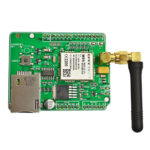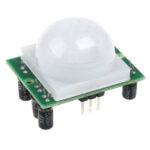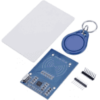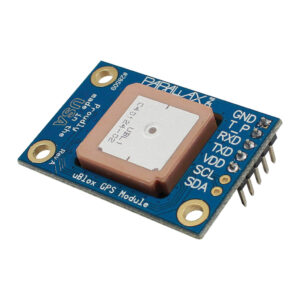Description
A radio frequency identification reader (RFID reader), EM18 in this case, is a device used to gather information from an RFID tag, which is used to track individual objects. Radio waves, of frequency 125KHz., are used to transfer data from the tag to a reader.
It is a technology similar in theory to bar codes. However, the RFID tag does not have to be scanned directly, nor does it require line-of-sight to a reader. The RFID tag it must be within the range of an RFID reader, which ranges from 3 to 300 feet, in order to be read. RFID technology allows several items to be quickly scanned and enables fast identification of a particular product, even when it is surrounded by several other items.
Passive RFID tags have no power of their own and are powered by the radio frequency energy transmitted from RFID readers/antennas. The signal sent by the reader and antenna is used to power on the tag and reflect the energy back to the reader. RFID tags have not replaced bar codes because of their cost and the need to individually identify every item. Here are a few quick facts about RFID.
- RFID does not require a direct line of sight
- RFID tags are able to be rewritten and reused
- RFID tags can be extremely durable against impact and environmental factors
- RFID readers can read hundreds of tags within seconds
- RFID tag data is encrypted and can be locked for extra security
- RFID tags can hold more data than other types of tags or labels
- RFID tags can have information printed on them like instructions, barcodes, or company names
- RFID systems can be integrated with other internal systems or processes
Most RFID systems are made up of the same basic components — a Reader, Antenna, RFID Tags, Cabling, and sometimes additional items or accessories. If it is a mobile handheld like we will be using today, only a handheld reader and an RFID tag will be needed.









Reviews
There are no reviews yet.